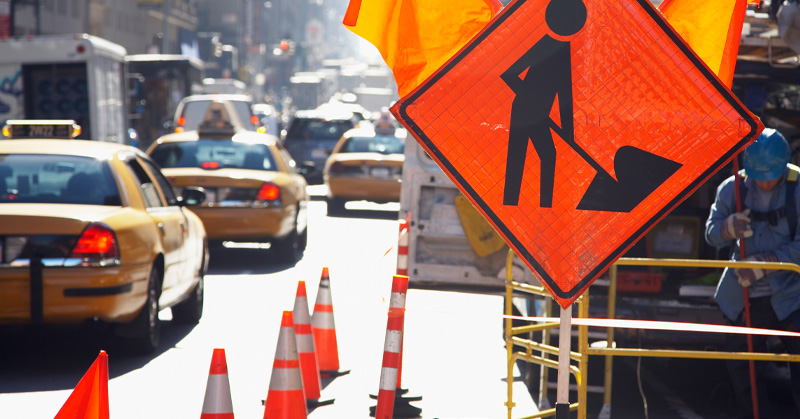
What New York Labor Laws Mean for Contractors
By Alliant Construction
Listen to the audio version:
New York has some of the most stringent labor laws in the country when it comes to construction site safety. If you operate in New York, understanding Labor Laws 200, 240 and 241 is not just a legal requirement; it is a critical component of managing your business’s risk and protecting your margins.
Understanding New York Labor Laws and Strict Liability
New York Labor Law Sections 240, also known as the “Scaffold Law,” and 241 impose strict liability on general contractors and property owners for certain injuries sustained by workers on construction sites. Unlike typical liability claims, these laws do not require a finding of negligence. If a worker is injured due to a fall from an elevated height or as a result of a safety hazard covered under these statutes, the contractor can be held fully liable regardless of who is at fault.
Labor Law 200, while more traditional in its approach, still requires contractors to maintain safe working conditions and can result in liability if unsafe practices are found.
Key Areas of Exposure for New York Contractors
Contractors in New York face complex regulatory risks that introduce significant liability in areas like:
- Falls from Heights: As the most litigated area under Labor Law 240, general contractors must put proper fall protections in place to avoid costly lawsuits and high-value claims.
- Site Hazards and Equipment Safety: Under Labor Law 241, even minor violations of construction safety codes can lead to strict liability.
- Subcontractor Oversight: You may be held responsible for injuries to workers you did not hire if they are working under your supervision or on your site.
The Insurance Implications of New York’s Labor Laws
Because of the nature of strict liability, general contractors in New York face steeper insurance premiums and limited carrier appetite. Having the right coverage in place, including owner-controlled or contractor-controlled insurance programs (OCIPs/CCIPs), and contractual risk transfer tools is essential. It is also critical to regularly review your insurance policies to ensure they respond to claims under these statutes.
Risk Management Best Practices for New York Contractors
To mitigate risk and successfully navigate today’s complex regulatory environment, New York contractors should adhere to the following best practices:
- Enforce Site Safety Protocols: Make sure fall protection and OSHA compliance are non-negotiable across all jobsites. This includes requiring personal protection equipment (PPE) and training employees on its proper use, providing guard rails and toe-boards around open-sided platforms, keeping walkways free of debris and tripping hazards, and constructing scaffolding that can support its own weight and at least four times the maximum weight it will hold.
- Review Subcontractor Agreements: Require proper indemnification, additional insured status and proof of coverage. Carefully review contracts before signing onto your next construction project to ensure the right protections and provisions are in place. This will safeguard your business against responsibility for a subcontractor’s mistake, saving your organization from arduous legal processes and unnecessary financial losses.
- Partner with Specialists: Work with insurance brokers and legal counsel who specialize in New York construction risk. At Alliant, our team of construction insurance specialists understand the complex regulatory landscape in New York. We leverage our industry expertise and extensive network of A-rated insurance carriers to meet our clients’ coverage requirements with custom insurance strategies and solutions.
How Alliant Construction Protects New York Contractors from Risk
New York’s labor laws create added responsibilities for general contractors, but with the right risk management approach, they also offer opportunities to strengthen your risk posture and proactively mitigate losses. A specialized insurance broker can help you comply with all state and industry regulations, put the right protections in place—from coverage structure to contract language—and implement a strong loss control program to prevent on-the-job injuries. Reach out to Alliant Construction to learn how you can reduce liability exposure and keep your construction projects running safely and efficiently.
Alliant note and disclaimer: This document is designed to provide general information and guidance. Please note that prior to implementation your legal counsel should review all details or policy information. Alliant Insurance Services does not provide legal advice or legal opinions. If a legal opinion is needed, please seek the services of your own legal advisor or ask Alliant Insurance Services for a referral. This document is provided on an “as is” basis without any warranty of any kind. Alliant Insurance Services disclaims any liability for any loss or damage from reliance on this document.
News & Resources




